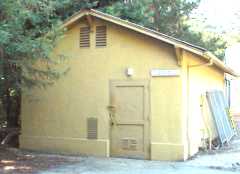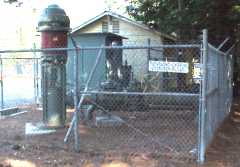|
Fighting Significant Fires © 2001 Capt. Willis Lamm, Water Supply Officer, Moraga-Orinda (CA) Fire District |
|
The pump stations are used to fill the reservoirs, usually at night, and the stored water is available for domestic use and fire fighting. A common misconception following the Oakland Firestorm of 1991 was that fire crews working the conflagration ran out of water because of the failure of various pump plants. While many of the pump plants did stop operating due to power failures, the loss of water pressure was more accurately attributed to the fact that more fire engines were connected to the water system than it could supply. Crews in the more efficient locations of the system received water while those in the marginal distribution areas did not.
Therefore for the purposes of sustaining fire flows, focus needs to remain on providing adequately sized storage facilities (reservoirs) and distribution piping of adequate diameter so as to efficiently move the water from the reservoirs to the areas needed, and in the quantities required, to combat the fire. The most efficient use of the pump plants remains the refilling of reservoirs as needed during normal duty cycles and keeping the reservoirs topped off during very high fire danger days. Return to Water Supply IndexBack to Information Section |
|
Unless otherwise noted, all contents of these WWW pages © 1996-2002, FireHydrant.org |
 One of the most important backbone components of the
One of the most important backbone components of the  If one studies the Cascade System, one realizes that water moves from zone to
zone through a series of pumps in order to reach the higher level reservoirs.
When fires are so large as to occupy multiple pressure zones within the system,
fire fighting must rely on water stored in the reservoirs as moving water from one zone
to another has little benefit when the water in each of the affected zones is needed within
that zone for fire fighting. Behavior of large fires is difficult to predict and
to deplete one reservoir by pumping its water into another zone is a gamble which can
backfire.
If one studies the Cascade System, one realizes that water moves from zone to
zone through a series of pumps in order to reach the higher level reservoirs.
When fires are so large as to occupy multiple pressure zones within the system,
fire fighting must rely on water stored in the reservoirs as moving water from one zone
to another has little benefit when the water in each of the affected zones is needed within
that zone for fire fighting. Behavior of large fires is difficult to predict and
to deplete one reservoir by pumping its water into another zone is a gamble which can
backfire.